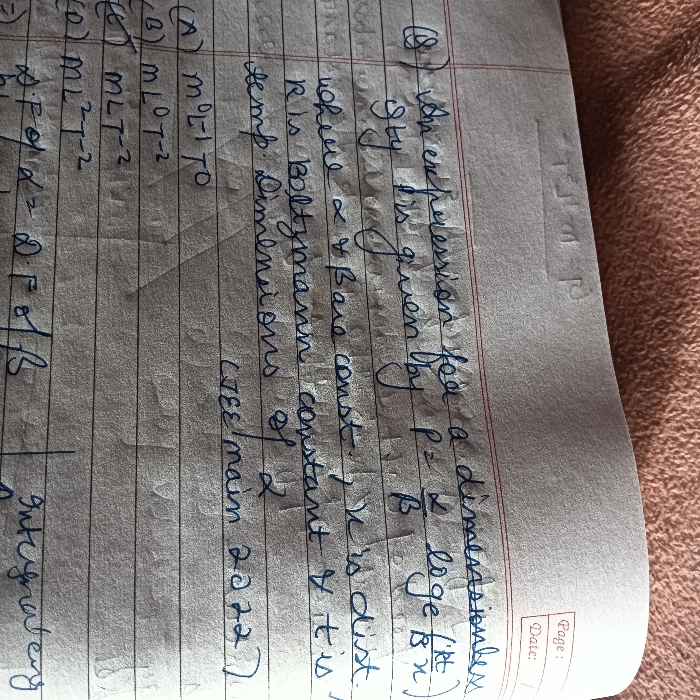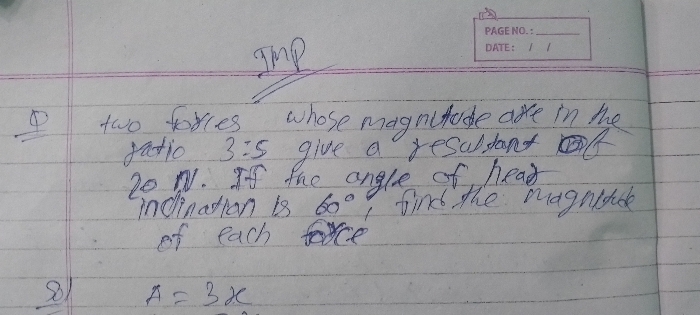CBSE Class 11-science Answered
Please answer this question.

Asked by dineshchem108 | 19 May, 2019, 09:44: PM
Position x ( in m ) = ( t3/3 ) -3t2 +8t +4 ............................(1)
Wherer t is time in seconds
We get speed of particle dx/dt ( in m/s) by differentiating eqn.(1) as, dx/dt = t2 -6t +8 ............................(2)
We get acceleration of particle d2x/dt2 (in m/s2 ) by differentiating eqn.(2) as, d2x/dt2 = 2t - 6 .....................(3)
for t=0 to t=5, all the above quantities are tabulated below
| t (s) | x (m) | displacement dx | speed dx/dt (m/s) | acceleration (m/s2) |
| 0 | 4 | 0 | 8 | -6 |
| 1 | 9.3 | 5.3 | 3 | -4 |
| 2 | 10.7 | 1.4 | 0 | -2 |
| 3 | 10 | -0.7 | -1 | 0 |
| 4 | 9.3 | -0.7 | 0 | 2 |
| 5 | 10.7 | 1.3 | 3 | 4 |
Total distance travelled S1 is the sum of magnitude of all displacements from t=0 to t=5.
It is given by S1 = 0+5.3+1.4+0.7+0.7+1.3 = 9.4 m
We see from table, from t=0 to t=3, particle is moving with retardation.
Hence distance S2 travelled during retardated motion is given by, S2 = 0+5.3+1.4+0.7 = 7.4 m
Hence S1/S2 = 9.4 / 7.4 ≈ 1.3
Answered by Thiyagarajan K | 20 May, 2019, 09:02: AM
CBSE 11-science - Physics
Asked by sy123946 | 07 Apr, 2024, 04:23: PM
CBSE 11-science - Physics
Asked by derhebha955 | 03 Apr, 2024, 09:03: AM
CBSE 11-science - Physics
Asked by sumedhasingh238 | 29 Mar, 2024, 05:15: PM
CBSE 11-science - Physics
Asked by sumedhasingh238 | 28 Mar, 2024, 11:10: PM
CBSE 11-science - Physics
Asked by roshnibudhrani88 | 23 Mar, 2024, 05:52: PM
CBSE 11-science - Physics
Asked by emad.amd | 21 Mar, 2024, 12:00: PM
CBSE 11-science - Physics
Asked by vinitdubey7735 | 14 Mar, 2024, 11:21: AM
CBSE 11-science - Physics
Asked by om636694 | 04 Mar, 2024, 09:10: PM
CBSE 11-science - Physics
Asked by rajuinwati12 | 04 Mar, 2024, 09:22: AM
CBSE 11-science - Physics
Asked by rosysahu678 | 02 Mar, 2024, 06:09: PM



